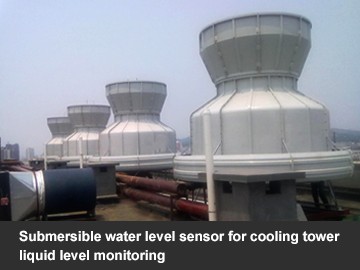Submersible water level sensor for cooling tower liquid level monitoring
Liquid level control is one of the common industrial process controls. The frequency of submersible water level sensor used in liquid level control is also getting higher and higher. This is because with the development of technology, the requirements of liquid level control systems's performance are becoming higher and higher, so the submersible liquid level sensor, which characterized by flexible product design, high precision and high stability,and meet the various requirements of customers on the process connection has become the leader in liquid level monitoring and measurement. Let's take a look at the liquid level control of the input liquid level sensor in the cooling tower.
Submersible water level sensor is mainly used to control the level of the cooling water in the cooling tower at any time within a reasonable range, and realize real-time liquid level monitoring and abnormal alarm functions to ensure no high-temperature failure or damage on the air compressor. This is because if the tower liquid level is too high, it is easy to cause the followings: the dehydration effect of the cooling tower to be poor; the system pressure fluctuation increases; the ceramic ring in the tower is easy to break; increase the workload of each water outlet and other problems. Only by the liquid level control, we can ensure the normal cooling effect of the cooling tower. Then how does the input level sensor achieve it?
Install submersible water level sensor on the radiator water tank or the expansion water tank. Based on the principle that the measured liquid static pressure is proportional to the height of the liquid, the isolated diffused silicon sensitive element of the liquid level sensor or the ceramic capacitive pressure sensitive sensor will be subject to the static pressure and converted into a standard electrical signal. Next the information is transmitted to the ECM through the engine harness. If the coolant level drops below a certain level, the ECM will cause an alarm to sound, and the engine power will gradually decrease to protect the engine.






